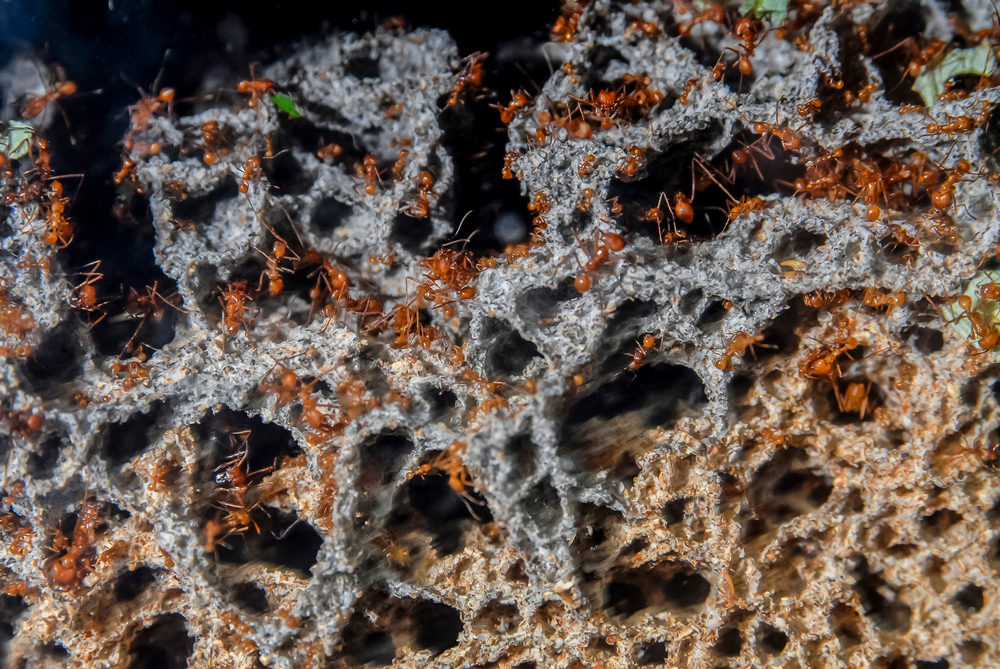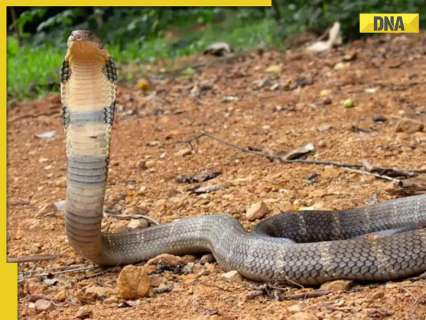Now Reading: Ants Do Poop and They Even Use Toilets to Fertilize Their Own Gardens
-
01
Ants Do Poop and They Even Use Toilets to Fertilize Their Own Gardens
Ants Do Poop and They Even Use Toilets to Fertilize Their Own Gardens

Key Takeaways on Ant Poop
-
Do ants poop? Yes. Any creature that eats will poop and ants are no exception.
-
Because ants live in close quarters, they need to protect the colony from their feces so bacteria and fungus doesn’t infect their health. This is why they use toilet chambers.
-
Whether they isolate it in a toilet chamber or kick it to the curb, ants don’t keep their waste around. But some ants find a use for that stuff. One such species is the leafcutter ant that takes little clippings of leaves and uses these leaves to grow a very particular fungus that they then eat.
Like urban humans, ants live in close quarters. Ant colonies can be home to thousands, even tens of thousands of individuals, depending on the species. And like any creature that eats, ants poop. When you combine close quarters and loads of feces, you have a recipe for disease, says Jessica Ware, curator and division chair of Invertebrate Zoology at the American Museum of Natural History.
“Ant poop can harbor bacteria, and because it contains partly undigested food, it can grow bacteria and fungus that could threaten the health of the colony,” Ware says.
But ant colonies aren’t seething beds of disease. That’s because ants are scrupulous about hygiene.
Ants Do Poop and Ant Toilets Are Real
Ant colony underground with ant chambers. (Image Credit: Lidok_L/Shutterstock)
To keep themselves and their nests clean, ants have evolved some interesting housekeeping strategies. Some types of ants actually have toilets — or at least something we might call toilets.
Their nests are very complicated, with lots of different tunnels and chambers, explains Ware, and one of those chambers is a toilet chamber. Ants don’t visit the toilet when they feel the call of nature. Instead, worker ants who are on latrine duty collect the poop and carry it to the toilet chamber, which is located far away from other parts of the nest.
Read More: Ants May Amputate Other Ants to Save Them – Is This a Sign of Empathy?
What Does Ant Poop Look Like?
This isn’t as messy a chore as it sounds. Like most insects, ants are water-limited, says Ware, so they try to get as much liquid out of their food as possible. This results in small, hard, usually black or brownish pellets of poop. The poop is dry and hard enough so that for ant species that don’t have indoor toilet chambers, the workers can just kick the poop out of the nest.
Ants Use Poop as Fertilizer
Whether they isolate it in a toilet chamber or kick it to the curb, ants don’t keep their waste around. Well, at least most types of ants don’t. Some ants find a use for that stuff. One such species is the leafcutter ant.
“They basically take little clippings of leaves and use these leaves to grow a very particular fungus that they then eat,” says Ware. “They don’t eat the leaves, they eat the fungus.” And yep, they use their poop to fertilize their crops. “They’re basically gardeners,” Ware says.
If you’d like to see leafcutter ants at work in their gardens and you happen to be in the New York City area, drop by the American Museum of Natural History. They have a large colony of fungus-gardening ants on display.
Other Insects That Use Toilets
Ants may have toilets, but termites have even wilder ways of dealing with their wastes.
Termites and ants might seem similar at first sight, but they aren’t closely related. Ants are more closely related to bees, while termites are more closely related to cockroaches, explains Aram Mikaelyan, an entomologist at North Carolina State University who studies the co-evolution of insects and their gut microbiomes. So ants’ and termites’ styles of social living evolved independently, and their solutions to the waste problem are quite different.
“Termites have found a way to not distance themselves from the feces,” says Mikaelyan. “Instead, they use the feces itself as building material.”
They’re able to do this because they feed on wood, Mikaelyan explains. When wood passes through the termites’ digestive systems into the poop, it enables a type of bacteria called Actinobacteria. These bacteria are the source of many antibiotics that humans use. (Leafcutter ants also use Actinobacteria to keep their fungus gardens free of parasites.) So that unusual building material acts as a disinfectant. Mikaelyan describes it as “a living disinfectant wall, like a Clorox wall, almost.”
Insect Hygiene
It may seem surprising that ants and termites are so tidy and concerned with hygiene, but it’s really not uncommon.
“Insects in general are cleaner than we think,” says Ware. “We often think of insects as being really gross, but most insects don’t want to lie in their own filth.”
Read More: An Ancient Ant Army Once Raided Europe 35 Million Years Ago
Article Sources
Our writers at Discovermagazine.com use peer-reviewed studies and high-quality sources for our articles, and our editors review for scientific accuracy and editorial standards. Review the sources used below for this article:
-
The American Society of Microbiology. The Leaf-cutter Ant’s 50 Million Years of Farming
Avery Hurt is a freelance science journalist. In addition to writing for Discover, she writes regularly for a variety of outlets, both print and online, including National Geographic, Science News Explores, Medscape, and WebMD. She’s the author of Bullet With Your Name on It: What You Will Probably Die From and What You Can Do About It, Clerisy Press 2007, as well as several books for young readers. Avery got her start in journalism while attending university, writing for the school newspaper and editing the student non-fiction magazine. Though she writes about all areas of science, she is particularly interested in neuroscience, the science of consciousness, and AI–interests she developed while earning a degree in philosophy.























